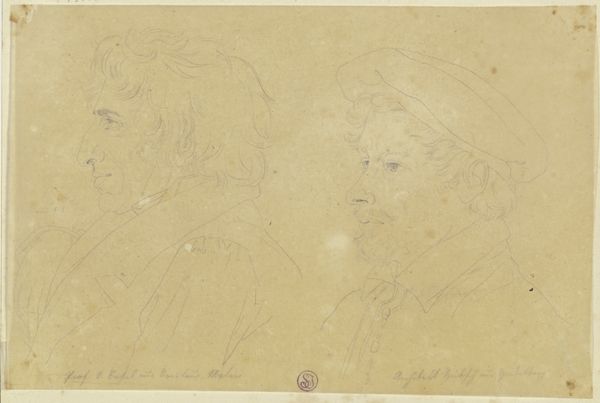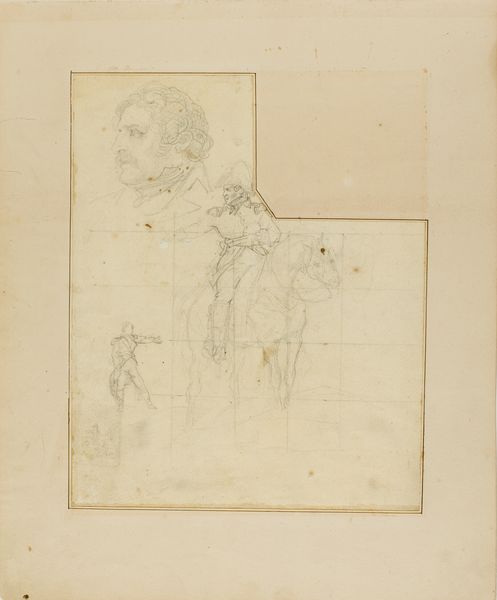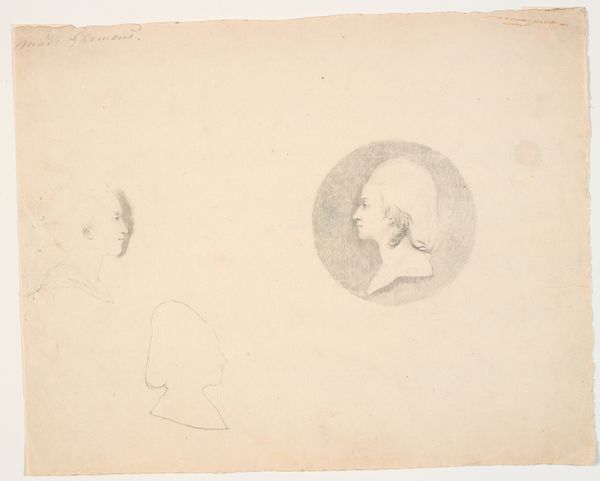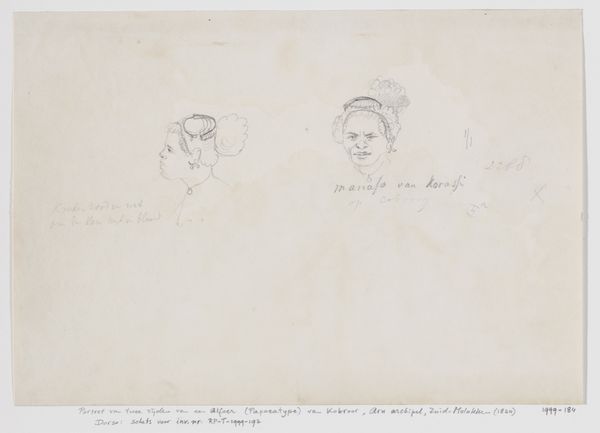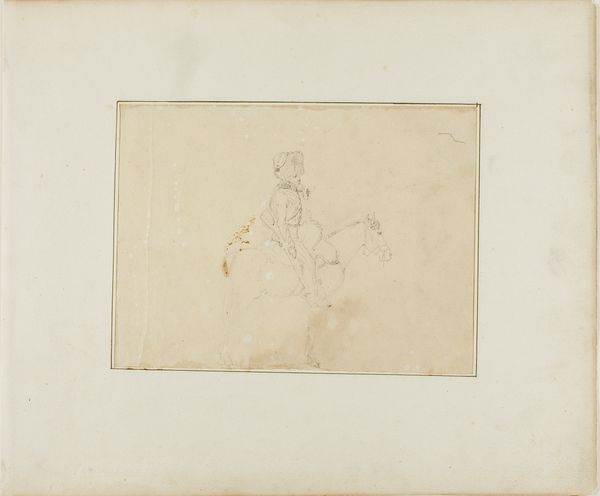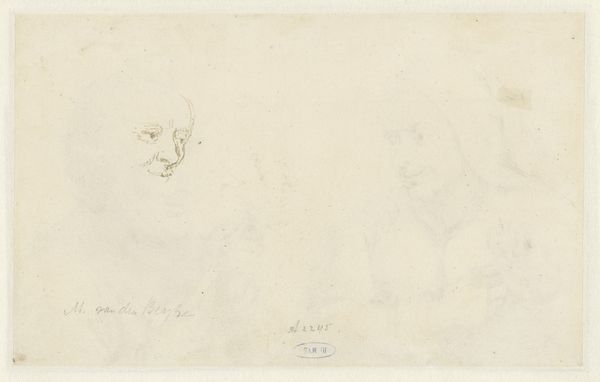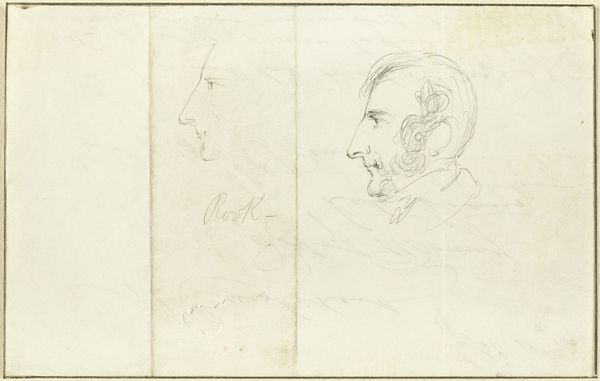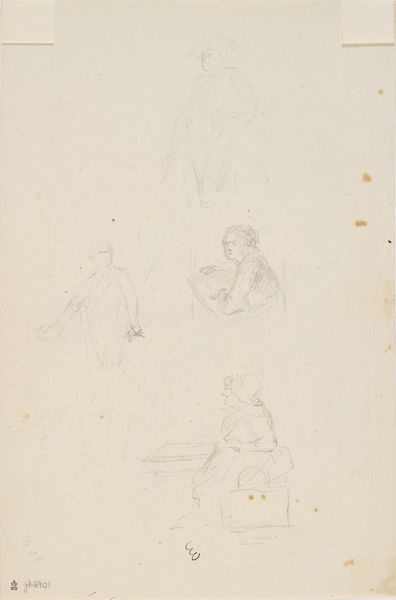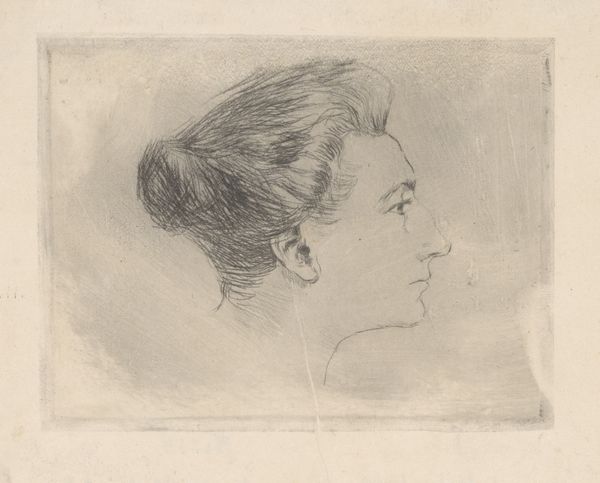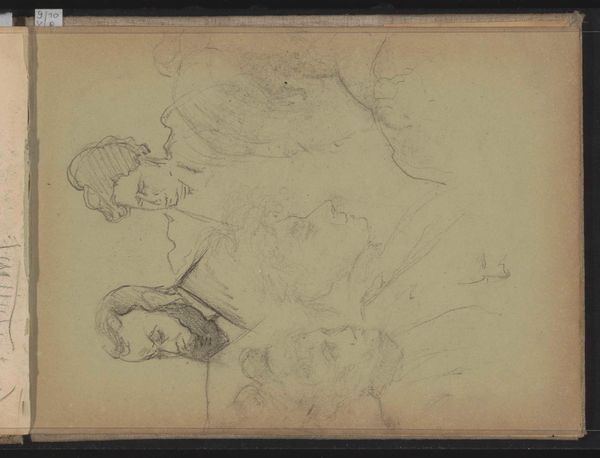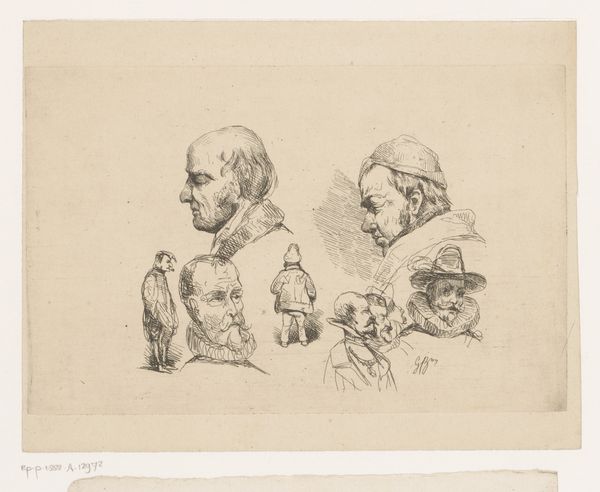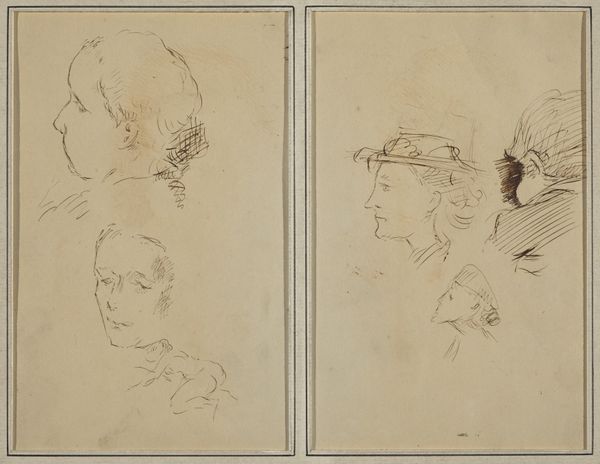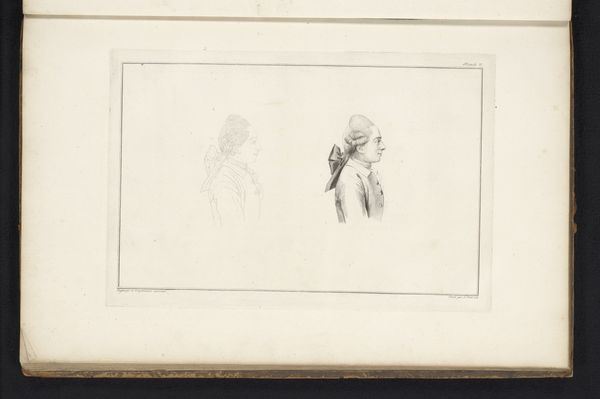
drawing, print, paper, pencil, graphite
#
portrait
#
pencil drawn
#
drawing
# print
#
caricature
#
pencil sketch
#
charcoal drawing
#
figuration
#
paper
#
pencil drawing
#
romanticism
#
pencil
#
graphite
Dimensions: 210 × 272 mm
Copyright: Public Domain
Curator: Here we have Théodore Géricault's "Three Caricatures of Heads," dating from 1818 to 1819. It's currently held here at The Art Institute of Chicago. Editor: My immediate impression is a stark, almost clinical dissection of the face. There's something unsettling about the isolation of each head, floating on this paper. The swift lines and almost skeletal representation evoke a certain fragility. Curator: Indeed, the apparent fragility belies a deeper critique of power and social structures prevalent in post-revolutionary France. Géricault was known for his Romantic tendencies, often turning to the marginalized, reflecting their physical and psychological states to comment on societal injustices. These aren’t just sketches; they're expressions of disenfranchisement. Editor: Looking closer at the use of line and form, note how Géricault distorts proportion for expressive purposes. The bulging eyes, the exaggerated noses—these aren't mere imperfections. Géricault emphasizes certain traits to reveal the character lurking within, wouldn’t you say? Curator: Precisely! The exaggeration can be read as a visual commentary on the excesses and corruption he witnessed. There is no perfect being but rather human, flawed and unique in their representation. Who is allowed to be represented and what status of power do they hold in order to commission such a portrait? Editor: There’s something about the subtle variations in shading, too. Notice the way the light catches certain planes of the face, highlighting bone structure. How do you suppose this emphasis directs the viewer's gaze and affects our interpretation of each figure? Curator: I think it redirects the viewer's perception towards questioning the subject of representation in art. Considering Géricault's "The Raft of the Medusa", these caricatures anticipate the critique of power dynamics found within a structured society as presented by that famous shipwreck. Editor: So, it's not just a study in physiognomy; it is also a semiotic exploration of character—as an indicator of a larger cultural framework of power structures that shaped it? Curator: Exactly. It prompts reflection not only on the artistic skill, which is undeniable, but also on the socio-political conditions that birthed this very specific style of art-making. Editor: It shifts your perception in that sense to then perceive them in relation to the real lived world, to examine how art holds up a mirror to cultural tensions, capturing specific and shared truths of being human. Curator: And that is why this seemingly simple pencil drawing can elicit so much thinking, debate, and even inspire us to think critically about the world around us! Editor: The dialogue between these three 'heads' feels incredibly timely; a fascinating reminder that how we see impacts who we see.
Comments
No comments
Be the first to comment and join the conversation on the ultimate creative platform.
